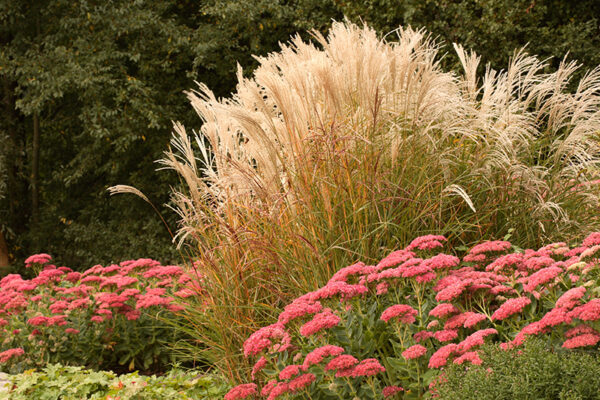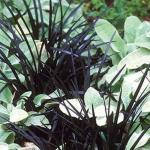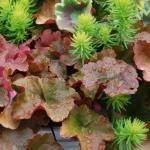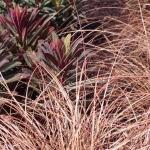My battle with social media.
My niece Anna and I play a game where we ask, “Would you rather?” type questions. My dilemma with social media, i.e.: Facebook, Instagram, Twitter, etc., reminds me of that game and comes down to this: Would you rather be famous? Or do what you love?
I have learned, as a business owner, that social media can become a beast. One that needs to be fed…constantly. The problem with that is I am a very small business with only 3 employees (me, myself, and I). Any time spent on social media is time spent away from bookkeeping, marketing, office work, not to mention actual gardening. Do I want to pursue “likes” in the hope, one day, of getting products to sponsor me? Do I really want to be an influencer? The short answer is no. That might be fine for some, but I have found the deeper I get into social media the more all-consuming it becomes. I had one fellow gardener confess “I am addicted to this.” And she’s good at it with lots of engaged followers but how? She is a small business owner like me and has limited time so how can she keep her business going AND the beast fed? She has hired a company to run her social media platforms. That company will engage with followers, like and comment. This bothers me.
In an age where things are so often not what they seem I yearn for authentic. I want to be real. (For a look at an authentic post click here) Do we present ourselves as real while someone else is behind the curtain pulling the strings? Is that honest? If someone takes time to comment on one of my posts, shouldn’t I be the one replying? And honestly, I would rather have my hands in the dirt then glued to my phone.
I will probably never be an influencer. That’s okay – I’ll be a gardener.

Got grass?

No, I am not talking about cannabis, although with dispensaries on every corner it seems like it would be easy enough to get. I am referring to ornamental grasses. To me they are the stars of the fall garden. They are very low maintenance and bring excitement and movement to the garden during a time when many plants are fading out. With different growth habits, sizes and colors, there is an ornamental grass for any garden. Maiden grass (Miscanthus) features plumes that are typically silvery, or pink-tinged. Some Miscanthus can grow to be over 6 feet tall. These are especially good in a privacy border. Of course, there are also dwarf varieties, like ‘Little Kitten’, and ‘Adagio’. Switchgrass (Panicum) tends to be more upright and features dangling seed heads which are beautiful when backlit by the autumn sun. Feather reed grass (Calamagrostis) ‘Karl Foerster’ is a tried-and-true performer with a narrow upright habit; it is also one of the first grasses to green up in the spring. This is important as many grasses are considered “warm season” and need the heat of summer before they really perform. Little Bluestem (Schyzachyrium) is a wonderful columnar native grass; I especially like ‘Standing Ovation’ – it’s blue-green blades turn a lovely wine red in fall.
Most ornamental grasses require full sun but there are a few that can tolerate some shade. If your garden is sun-challenged try planting northern sea oats (Chasmanthium latifolium), Japanese forest grass (Hakonechloa) or sedges (Carex).
If you want a grass that makes you feel better this fall skip the dispensary and head to your local nursery.
Hugelkulture.
This time of year I see lots of leaf bags filled with sticks, branches and leaves waiting to be picked up by the trash guy. Instead of that why not try hugelkulture? Hugelkulture, pronounced Hoo-gul-culture, means hill culture or hill mound. It’s a very simple method of gardening which involves layering logs, branches, leaves, grass clippings, cardboard, and compost and then topping with soil before planting. It’s the ultimate no-dig gardening.

There are many benefits to hugelkuture. For one the decaying logs provide long-term nutrients to the soil. In addition, the logs produce heat as they decompose, basically creating a warmer microclimate, which will allow you to garden longer into the season. Compaction is a problem that is avoided with hugelkulture because as the logs and branches break down they increase soil aeration. Decaying wood also acts like a sponge and means water is stored and released as needed. Less watering is a bonus as summers heat up and water bans are implemented. Because hugelkutlure creates a hill garden it is easier to harvest – no bending required. This is a benefit I am appreciating more and more as I get older!
I have a steep hill behind my garden that goes down to the street. In my own way I have been playing with hugelkulture (or at least trying to level things out). I threw some logs in at first then added branches, then various waste from client jobs (evergreen trimmings, pumpkins from fall, old plants, etc.) Threw in some grass clippings, chopped up leaves and then more plant waste. Once the area is level, I will add soil and plant.
If you try hugelkulture you will save so much money on leaf bags you can buy more plants!
Power Couples.
I have a presentation with the same name and in it I share perennials that work well together, not unlike the Power Couples seen in Hollywood and business. Fall is a great time of year to assess your garden and see where there might be areas that could use a little tweaking. The trick with matchmaking, in this case creating your own Power Couple, is to make sure individual plants will work well together. They must be enough alike – have the same light and moisture requirements, for example. But they should also have differences. It’s the differences that will provide the excitement. For instance, a daisy shaped flower contrasted with a spike, or a finely textured plant contrasted with a coarse texture.
In a successful Power Couple one member is not going to take over – each hold their own but bring something a little different to the table. If you are looking to create a fall Power Couple and you have sedum in your garden, why not introduce some maiden grass, Miscanthus? The complimentary colors and contrasting textures are beautiful. ‘Redhead’ is another wonderful ornamental grass that would be a great partner. If you have monkshood, Aconitum, in your garden consider pairing it with the yellow finely textured fall foliage of blue star, Amsonia hubrichtii.
I love playing matchmaker in the garden and I bet you will too.
Click on image below to see plant names
Seed Starting Hack.
This is the time of year where many of us gardeners find ourselves knee deep in seed catalogs. After all, who can resist the lure of growing your own (unusual) plant material? Not me.
There are some great seed catalogs out there. I especially love Annie’s Heirloom Seeds, Prairie Moon Nursery, Baker Creek, Select Seeds, Hudson Valley and Renee’s Garden Seeds. These beautiful catalogs are as irresistible to me as hosta are to deer. I spend hours drooling over the glorious pictures dreaming about what I will grow. However, I prefer to spend my money on the actual seeds and plants rather than all the paraphernalia that comes with growing them. Rather than buy the little grow kits with domed lids let me share a seed starting hack. It involves using something you already have – toilet paper. I assume you do use toilet paper?
 Start by saving your empty rolls. Next make a series of 1 to 1 1/2-inch cuts around one end of the roll, approximately a half an inch apart, which you will then fold into the center of the roll to create your bottom. If they are wobbly you can put them in a hard-sided container, or simply tie the rolls together with twine for stability. Finally fill with seed starting mix and plant. Water according to planting instructions and when it is time to transplant into the garden you can drop the whole thing in! Just make sure none of the roll extends above the soil surface as it will wick water from the roots of the plants. The cardboard will break down so it has the benefits of peat pots but is more environmentally friendly.
Start by saving your empty rolls. Next make a series of 1 to 1 1/2-inch cuts around one end of the roll, approximately a half an inch apart, which you will then fold into the center of the roll to create your bottom. If they are wobbly you can put them in a hard-sided container, or simply tie the rolls together with twine for stability. Finally fill with seed starting mix and plant. Water according to planting instructions and when it is time to transplant into the garden you can drop the whole thing in! Just make sure none of the roll extends above the soil surface as it will wick water from the roots of the plants. The cardboard will break down so it has the benefits of peat pots but is more environmentally friendly.
If you prefer to start seeds in a reusable container K-cups (the coffee used in Keurig makers) are perfect. They are just the right size and even have a hole in the bottom for drainage.
By starting seeds with something you already have you have saved money. And with that $19.99 you can buy more seeds! You’re welcome.






Follow Us!